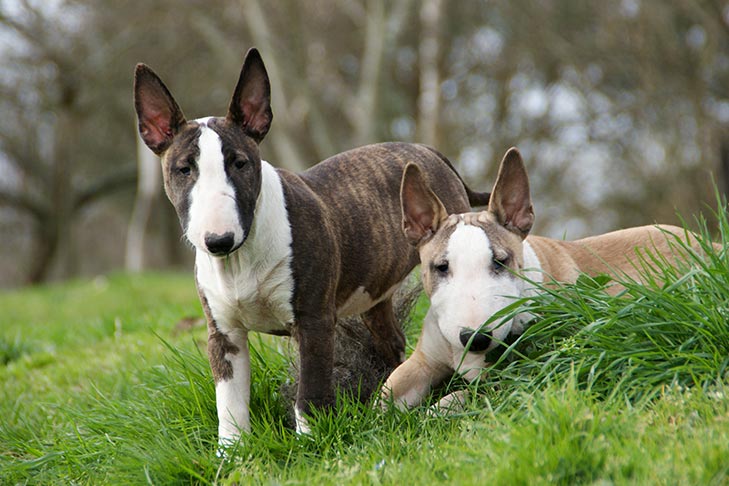
Understanding the genetic modes of inheritance is vital for dog breeders, as it helps them predict the likelihood of traits or genetic disorders appearing in offspring. This article provides simplified explanations of different modes of inheritance, which will be expanded on in coming articles.
Genetic Building Blocks:
Deoxyribonucleic acid (DNA) is the molecule that carries the genetic instructions for the development, functioning, growth, and reproduction of all living organisms, including dogs. DNA is found in the nucleus of cells and is organized into structures called chromosomes. Each cell of a dog typically has 39 pairs of chromosomes (78 total), including one pair of sex chromosomes (XX in females and XY in males). The pairs typically include one chromosome from the dam and one from the sire.
Genes are specific sequences of DNA that serve as the units of heredity responsible for determining traits in dogs. Each gene is located at a specific position in the chromosome (locus) and codes for a particular protein or functional RNA molecule. Genes can have different forms, called alleles. These alleles often have different variants in the DNA sequence, which can also be referred to as mutations. Genotype refers to the genetic makeup of an individual, represented by the combination of alleles it carries. Alleles can have different modes of inheritance, meaning that different combinations of genetic variants can result in different traits or genetic disorders, known as phenotype. Phenotype refers to the observable characteristics or traits of an individual, which result from the interaction between its genotype and the environment.
Different modes of inheritance of genetic variants helps determine the phenotype that will be observed. In some cases the phenotype may be observable at birth, and in other cases, it may develop later in life, or not at all.
Modes of Inheritance:
- Autosomal Dominant: A single copy of the dominant allele is sufficient to express the trait. The term “autosomal” refers to a gene on a chromosome that is not a sex chromosome. For example, a genetic variant found PKD1 in Bull Terriers linked to polycystic kidney disease is inherited in a dominant manner.
- Autosomal Recessive: Two copies of the recessive allele are needed for the trait to be expressed. With this mode of inheritance, a dog with 1 copy of a genetic variant is called a “carrier”, and a dog with two copies is called an “affected.” If a breeding pair are both carriers of the same genetic disorder, they have a 25% chance of having offspring with that disease, 50% chance of having carrier offspring (no symptoms), and 25% of having offspring that are not carriers or affected. A classic example of an autosomal recessive condition is Progressive Retinal Atrophy (PRA), Progressive Rod-Cone Degeneration (prcd), which leads to late-onset blindness. Interestingly, not every PRA is inherited in an autosomal recessive manner, as many genetic variants manifest with the same disease, PRA.
- X-Linked Recessive: X-linked recessive traits are carried on the X chromosome and are more commonly expressed in males. Males have only 1 X chromosome, so they inherit a genetic variant associated with disease from their dam’s X chromosome. Hemophilia A is an example of this type of inheritance.
- Polygenic Inheritance: Polygenic traits are influenced by multiple genes and often show a continuous range of variation. Hip dysplasia is an example of a polygenic trait, and radiographs characterizing phenotype have been a useful breeding tool for decades.
- Codominance: Both alleles are expressed equally in the phenotype, as can be seen with blood type in dogs.
- Incomplete Penetrance: This more complex mode of inheritance is a genetic phenomenon that occurs when some dogs with a disease-causing variant develop the disease, while others do not. Degenerative Myelopathy (Common Variant, SOD1A), commonly considered an autosomal recessive condition, actually has incomplete penetrance. Although having 2 copies of this genetic variant can lead to progressive weakness and paralysis, not every dog with 2 copies goes on to develop the disease.
- Epistasis: Although not exactly a mode of inheritance, epistasis is a circumstance where the expression of one gene is modified (e.g., masked, inhibited or suppressed) by the expression of one or more other genes. Coat color in dogs is an excellent example of epistasis.
Sometimes the true mode of inheritance may still be under investigation, whereas the genotype at a locus is known. Sometimes the mode of inheritance can be complicated and a genetic variant may be associated with increased risk of developing a disease or trait. When discussing an individual dog’s genotype, the least confusing method is to say whether that dog has 0 copies of a genetic variant at a locus, one copy, or two copies.
Understanding these modes of inheritance is essential for dog breeders to make informed breeding decisions, promote desirable traits, and reduce the incidence of genetic disorders within dog populations.

